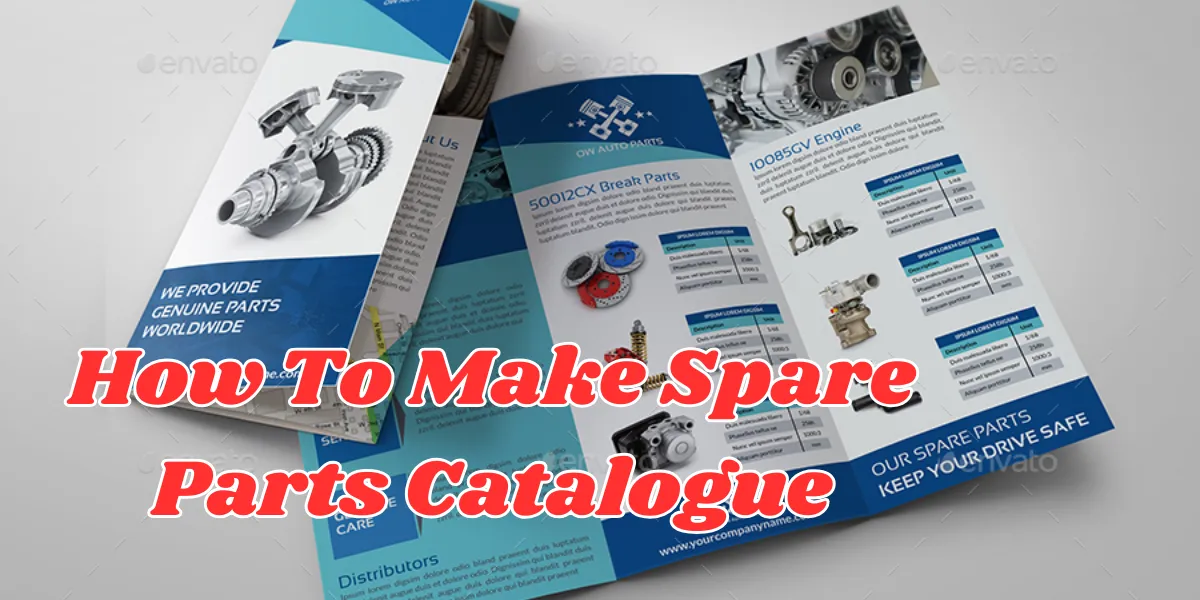How To Make Spare Parts Catalogue ?
Creating a well-organized and informative spare parts catalogue is crucial for businesses in various industries. Whether you’re in manufacturing, automotive, or any other sector that deals with spare parts, an efficient catalogue can streamline operations and improve customer satisfaction. In this article, we will guide you through the process of creating an effective spare parts catalogue, from start to finish.
Why Do You Need a Spare Parts Catalogue?
Enhancing Customer Experience
A well-structured spare parts catalogue enhances the overall customer experience. When customers can easily find and identify the parts they need, it reduces frustration and increases their confidence in your brand. This leads to higher customer satisfaction and loyalty.
Streamlining Inventory Management
Efficient inventory management is critical to reducing costs and improving profitability. A comprehensive catalogue allows you to keep track of your spare parts inventory effectively, reducing the risk of overstocking or running out of essential parts.
Improving Service Efficiency
Service technicians benefit from a well-organized catalogue as it enables them to quickly locate the right parts for repairs and maintenance. This speeds up service delivery, reduces downtime, and boosts productivity.

Steps to Create a Spare Parts Catalogue
Gather Information
The first step is to collect all relevant information about your spare parts. This includes part numbers, descriptions, images, pricing, and compatibility data. Ensure that your data is accurate and up to date.
Choose a Catalogue Format
Select the format for your catalogue, whether it’s digital, print, or both. Consider your target audience and their preferences when making this decision.
Organize and Categorize
Categorize your spare parts logically. You can group them by type, function, or system. This makes it easier for customers to navigate the catalogue and find what they need quickly.
Create Detailed Descriptions
Write clear and concise descriptions for each spare part. Include technical specifications, dimensions, and any other relevant information. Use high-quality images to aid in part identification.
Design and Layout
Pay attention to the visual appeal of your catalogue. A clean and user-friendly design enhances the overall experience. Ensure that it’s easy to read and navigate.
Regular Updates
Maintaining your catalogue is an ongoing process. Regularly update it to include new parts, remove obsolete ones, and ensure pricing and compatibility data are current.
Best Practices for Catalog Creation
Keyword Optimization
Include relevant keywords in your catalogue to improve its search engine visibility. This can attract more potential customers to your products.
Cross-Referencing
Provide cross-references for related parts. This helps customers find alternative solutions and encourages upselling.
User-Friendly Search
Implement a search feature in your digital catalogue to enable customers to find parts quickly by entering part numbers or keywords.
Quality Control
Regularly review and proofread your catalogue to eliminate errors and inconsistencies. Inaccurate information can erode customer trust.
Mobile Optimization
Ensure that your digital catalogue is mobile-friendly, as many users access information on smartphones and tablets.
Creating a spare parts catalogue requires careful planning and execution, but the benefits for your business are substantial. By enhancing the customer experience, streamlining inventory management, and improving service efficiency, a well-designed catalogue can become a valuable asset. Follow the steps and best practices outlined in this article to create a catalogue that sets your business apart.
Vin Removal
Vin removal is a crucial process for vehicle maintenance and customization. Learn how to safely and effectively remove VINs with expert tips.




